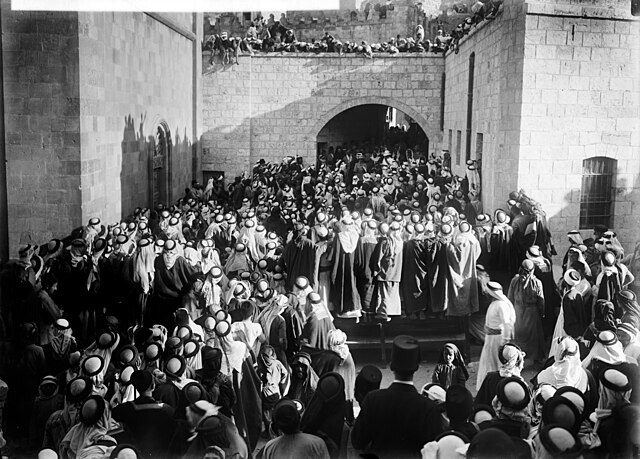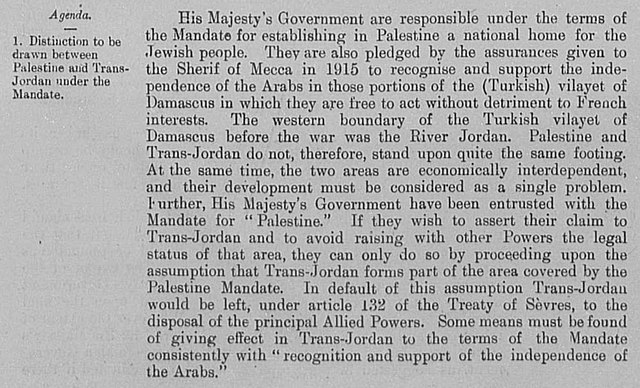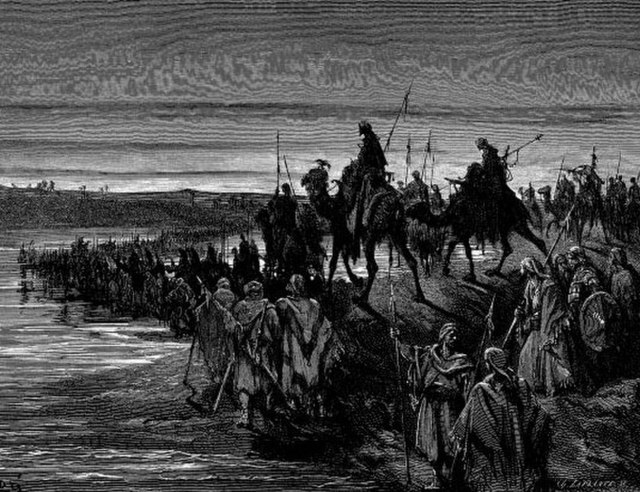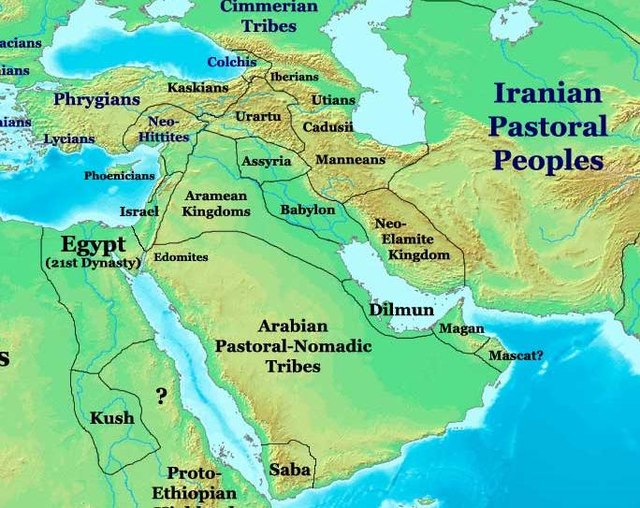The Emirate of Transjordan, officially known as the Amirate of Trans-Jordan, was a British protectorate established on 11 April 1921, which remained as such until achieving formal independence in 1946.
Herbert Samuel's proclamation in Salt, August 1920, for which he was admonished by Curzon
12 March 1921 British memorandum explaining the situation of Transjordan: "His Majesty's Government have been entrusted with the Mandate for 'Palestine'. If they wish to assert their claim to Trans-Jordan and to avoid raising with other Powers the legal status of that area, they can only do so by proceeding upon the assumption that Trans-Jordan forms part of the area covered by the Palestine Mandate. In default of this assumption Trans-Jordan would be left, under article 132 of the Treaty of Sèvres, to the disposal of the principal Allied Powers."
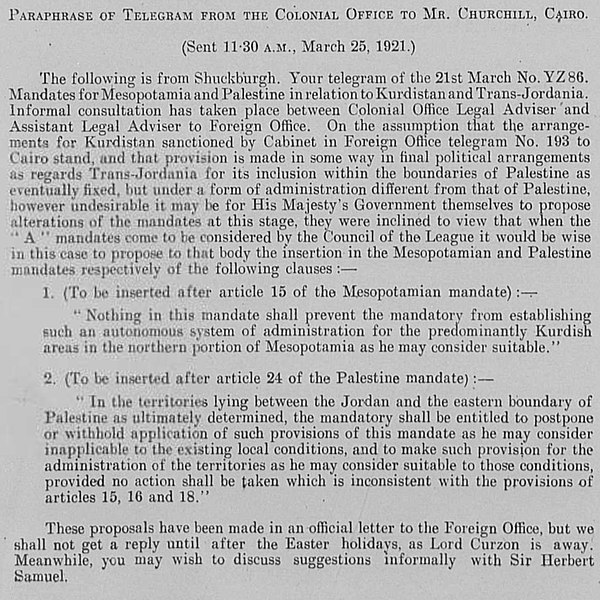
25 March 1921 proposal, approved a week later, to include Transjordan via Article 25: "On the assumption that ... provision is made in some way in final political arrangements as regards Trans-Jordania for its inclusion within the boundaries of Palestine as eventually fixed, but under a form of administration different from that of Palestine, however undesirable it may be for His Majesty's Government themselves to propose alterations of the mandates at this stage, they were inclined to view that when the "A" mandates come to be considered by the Council of the League it would be wise in this case to propose to that body the insertion...after article 24 of the Palestine mandate..."
The first general election in Transjordan took place on 2 April 1929
Transjordan, the East Bank, or the Transjordanian Highlands, is the part of the Southern Levant east of the Jordan River, mostly contained in present-day Jordan.
"Reuben and Gad Ask for Land", engraving by Arthur Boyd Houghton based on Numbers 32.
"The Children of Israel Crossing the Jordan", engraving by Gustave Doré. Moshe Weinfeld argues that in the Book of Joshua, the Jordan is portrayed as "a barrier to the promised land."
Near East 1000 BCE
Countries pictured are (clockwise from top right) Syria, Iraq, Saudi Arabia, Egypt (across the Gulf of Aqaba), Israel, the occupied West Bank Territory, and Lebanon. In the center is Jordan.

